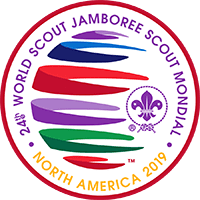When not exploring the Summit or its many activities, you will be in your subcamp with other people from around the world. It is in your subcamp that you
will eat your daily meals, hold meetings, get to know other Scouts, and sleep in your tent. Working together to build and design your campsite will foster a greater understanding of the Scouting values. The subcamp will also serve as a home where you can reflect on all that you did that day and a place to share your thoughts and feelings about the next day’s activities.
Base Camps A / B / C / D / E / F
(Base camp Ephesus is reserved for IST and CMT only. Some groups of ISTs will live in other base camps due to job-specific requirements.)
The theme of the 24th World Scout Jamboree is Unlock a New World. With this in mind, we have chosen to name our base camps and subcamps after World Heritage Sites.
A World Heritage Site is a landmark or area that is selected by the United Nations Educational, Scientific and Cultural Organization (UNESCO) as having cultural, historical, scientific, or other forms of significance. These special places are legally protected by international treaties. The sites are judged important to the collective interest of all humanity.
To start, each base camp is assigned a letter—A, B, C, D, E, and F. We have matched each letter with a World Heritage Site that begins with those same letters
-
- Base Camp A: Agra Fort
- Base Camp B: Blenheim Palace
- Base Camp C: Canadian Rockies
- Base Camp D: Durham Castle
- Base Camp E: Ephesus
- Base Camp F: Fort Jesus
Subcamps
Each participant subcamp will be home to between 25 and 55 units. Units are split into four patrols, each having nine youth and one unit leader. This means each unit has 40 members and a subcamp will have between 1,000 to 2,200 youth and adult unit leaders!
Each subcamp has a headquarters, which houses your local IST leadership. This group includes the subcamp chief, subcamp commissioner, head of administration, administrative duty officers, maintenance personnel, and other helpful individuals who can answer questions about available programs. This group will be your number one resource for help. The staff here will have the contact numbers for all other sites and will have direct contact with the Special Needs Services Team, interpretation services, and lost and found. This is why it is important that we as Scouts pass our important questions on to our unit leaders.
The jamboree needs everything that a real city has, such as medical centers, postal mail services, news and communications, electricity, sanitation, and banking. Your subcamp is like a neighborhood and needs lots of shared facilities too.
Agra Fort
- Subcamp A1—Acropolis
- Subcamp A2—Angkor
- Subcamp A3—Aksum
- Subcamp A4—Anjar
Blenheim Palace
- Subcamp B1—Brasilia
- Subcamp B2—Butrint
- Subcamp B3—Boyana Church
- Subcamp B4—Byblos
Canadian Rockies
- Subcamp C1—Canterbury Cathedra
- Subcamp C2—Centennial Hall
- Subcamp C3—Carlsbad Caverns
- Subcamp C4—Castel del Monte
Durham Castle
- Subcamp D1—Delos
- Subcamp D2—Darien National Park
- Subcamp D3—Danube Delta
- Subcamp D4—Dinosaur Provincial Park
Ephesus
- Subcamp E1—Everglades
- Subcamp E2—Ellora
- Subcamp E3—Ennedi
- Subcamp E4—El Tajin
Fort Jesus
- Subcamp F1—Fraser Island
- Subcamp F2—Fortress of Suomenlinna

